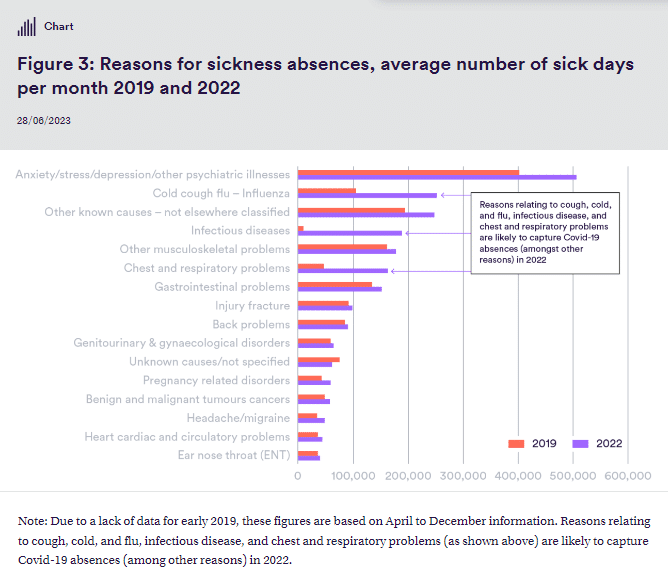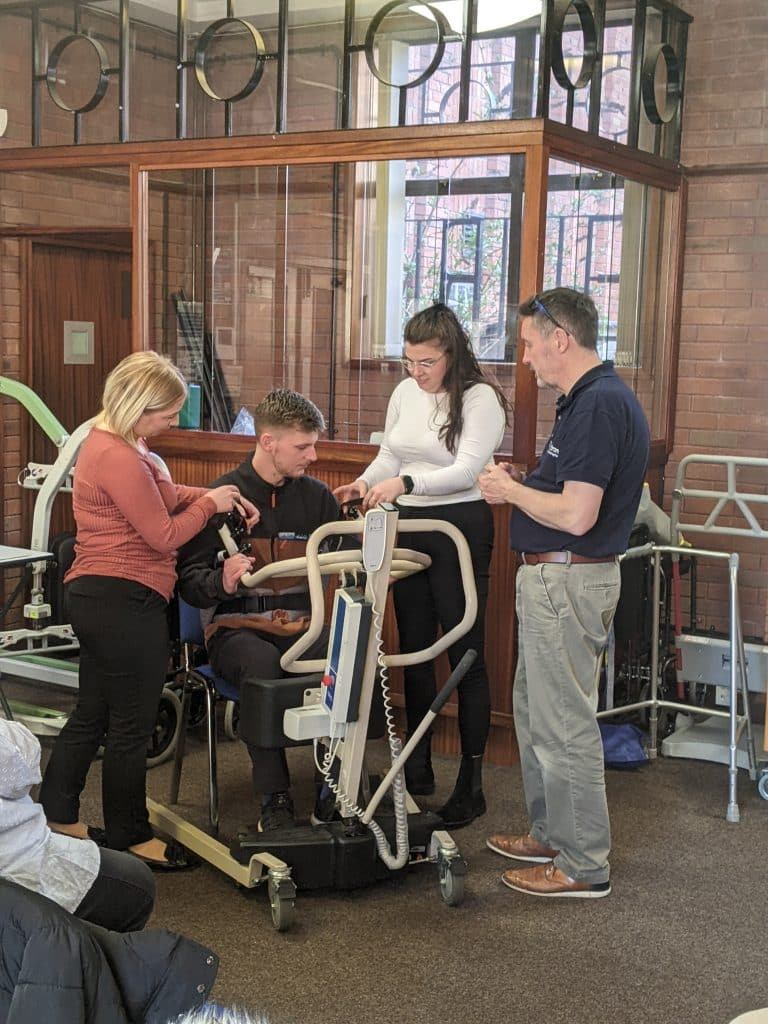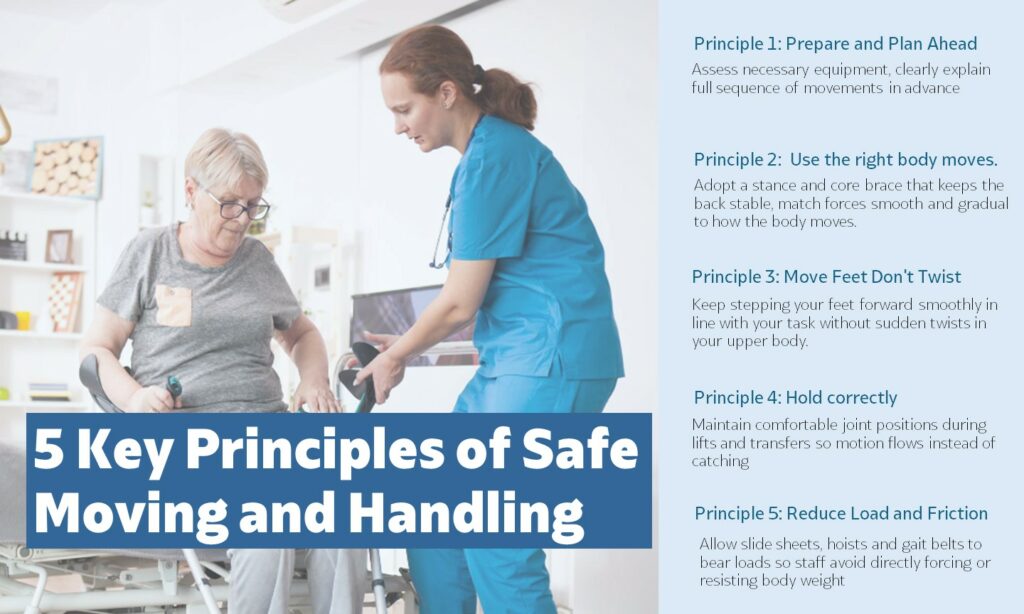The 5 Key Principles for Safer Moving and Handling of People: A Caregiver’s Step-by-Step Guide
Estimated reading time: 9 minutes
As healthcare providers on the front lines of care, we understand better than anyone the physical demands of supporting those with decreased mobility and strength. Knowing the key principles of safe moving and handling is important for all health care workers.
This would help you do the job of moving people or help them better.
Whether helping patients out of bed, moving them into a wheelchair, or helping residents walk – regular lifting takes a big toll on our bodies over time if we fail to take necessary precautions.
In fact, NHS statistics show that over 20% of sickness absences and early retirements in the UK health sector stem from chronic back problems.
Consider these stats
- Back pain accounts for over a third (35%) of all days lost to work-related illness. This causes about 12.5 million lost working days per year [Source: Versus Arthritis ].
- The current rate, at 1,400 cases per 100,000 workers (1.4%), is similar to the 2018/19 pre-coronavirus level [Source: HSE, Historical picture statistics in Great Britain, 2023] .
- In any one year, an estimated 10-12 million people in the UK will suffer from bouts of back pain, many experiencing multiple episodes. 470,000 workers suffer from MSK signs [NHS Employee, 2023]
- Lower back pain is the 2nd biggest workplace health issue after stress/anxiety as a cause of time off work. Employers will spend £3.8 billion annually by 2025 on back pain-related absences according to The John Lewis, Work Well Report.
What’s more, caregivers suffer the highest injury rates of any industry, with more than half of injuries related to moving and handling issues.

By following correct moving and handling techniques grounded in 5 core principles, we can greatly reduce these injury numbers while providing safer, more dignified care.
So let’s walk through these key principles for safer moving practice, including step-by-step guidance on new movement methods you may not have learned yet.
Table of contents
Principle 1: Prepare and Plan Ahead
Whenever you assist with transfers or repositioning, you should:
- Take time to gather equipment.
- Assess the environment.
- Encourage resident participation.
- Coordinate with team members rather than rushing through carelessly.
Failing to prepare leads to rushing that greatly increases injury risks.
Make these four foundational steps a solid part of your workflow:
Step 1: Collect necessary mobility aids – gait belts, walkers, hoists, slide boards, etc.
Make sure they have a full charge and are working properly if they use batteries.
Get more assistance if needed, depending on the resident’s ability and body size.
Step 2: Clear space by moving obstacles like furniture out of the path for mobility and transfers.
Open wheelchair locks, remove foot pedals and arm trays if needed.
Step 3: Explain what you are going to do step-by-step and encourage the person to actively participate as able. Adjust based on pain, strength, and endurance issues.
Step 4: Direct moves with teammates via commands like “Ready? 1, 2, 3 – stand,” so you all lift, lower, or transfer in unison. Review mobility limits.
Making a quick 4-step plan before moving or lifting someone helps avoid harm.
Don’t forget the steps are:
- Know exactly what needs doing
- Check how well the person can stand, walk, grip
- Get any equipment needed to help move them safely
- Clearly explain what will happen and give alerts before gentle guidance.
Taking a minute to think things through provides structure. This prevents rushed, unpredictable movements that could twist or strain.
The result is tasks become smoother and less risky for everyone. Injuries get avoided.
Principle 2: Use the right body movements
The medical world’s old mantra was “lift with your legs, not your back,”.
However, a 2021 research by Michael von Arx and team shows that lifting with just the legs can still strain the spine tissues to their limits.
This second principle for moving people explains specific body positions that define the correct moving techniques, namely the Pelvic Tilt and Wide Base of Support.
Follow their step-by-steps:
Step 1 – Pelvic Tilt: Tuck the tailbone inward to straighten the back into neutral alignment before lifts. Maintain neutrality during lifts by tilting the top of the pelvis forward slightly.
Step 2 – Wide Base: Set feet shoulder-width apart, have one foot slightly ahead for stability. Hip-width stances no longer cut it for prevention.
Now add the Pelvic Tilt and Wide Base adjustments into these next steps:
Step 3: Bend knees deeply, preparing to lever a patient upward from a chair or bed. Do not bend the waist.
Step 4: Raise the client using leg strength as the back stays neutral. Let bent legs straighten fully as you stand. Reverse to lower.
Learning these evidence-backed Pelvic Tilt and Wide Base refinements in body positioning is okay.
Also a study on physical activities like jumping and heavy lifting place much forces on the lower spine than everyday tasks –Robin Schäfer et al, 2023 research. This should guide what you do.
So whether you are rolling, lifting, transferring, or pivoting patients, make this new body alignment protocol second nature.

Join our
Practical Moving & Handling Training
- Gain practical skills to safely move and assist people within your care.
- Reduce injuries due to lifting, carrying and handling day to day.
- Gain skills to safely assist all patients of any size and ability.
- Protect those in your care.
Principle 3: Keep your feet moving; avoid twisting your body.
Common training just says “don’t twist your back!”
But even certain ways of stepping still makes the torso need to suddenly turn in ways that squeeze the spine.
New findings show we must go further by moving feet nonstop in the direction of the load without interruptions.
Follow this step-by-step:
Step 1: Face the spot you intend to carry the load.
Step 2: Take small, fluid steps oriented to your goal without rotating your torso or looking elsewhere. Keep the pelvis pointing towards the target.
Step 3: To change direction, rotate feet until the whole body squares to the new path. Again, take fluid, linear steps.
Step 4: For precise alignment, look over the shoulder opposite the direction you want to place the load down, i.e. look left while stepping right to lower something.
Moving your feet steadily towards your goal helps keep the spinal column bent naturally.
Stopping or changing direction suddenly can instead strain surrounding muscles and tendons with quick starts and stops.
Research confirms taking smooth, consistent steps is safer by preventing forceful speeding up and slowing down motions that could lead to tears or pulls.
Principle 4: Hold correctly
Even with good movement, wrong grabs can hurt the back more. Holding someone the wrong way increases press and rub forces on the spine.
Yet common ways care staff grab during physical assists bring overlooked risks.
Here is step-by-step advice to prevent harmful grabs:
Step-1: When holding an arm or leg to help someone stand or walk, always hold above the joint. For example, grip the forearm or upper arm.
Never hold below the elbow or by the hand. This jerks and unbalances.
Step-2: Take hold above waist level whenever feasible e.g. use gait belt or grip shirt back between shoulders to stabilise, avoid low trouser belts.
Step-3: When assisting chair entry/exit, do not grab armrests – this torques client spines. Stand alongside with both hands on upper back instead.
Step-4: Never pull on limbs! As examples, tugging on a leg rotates hip joints harshly.
Pulling on just one arm bends the body in a bad way. It can hurt the shoulder a lot.
Studies now prove certain assistance grabs bring exponential rather than additive loads – meaning they overstress tissues radically beyond just bodyweight strains.
So teaching staff better places to hold when assisting is extremely important.
Principle 5: Reduce Load’s Weight and Friction
While mastering biomechanics is necessary, we must also reduce external workload factors or back injury tolls continue.
The fifth principle of safe moving and handling helps you understand what do to when carrying heavy objects or persons.
Follow these step-by-steps:
Step 1: Use lift equipment like hoists and transfer slides for impaired mobility and larger patients whenever applicable.
Despite training, floor/furniture transfers should not exceed 55 lbs.
Step 2: On floors, ensure slide sheets reduce friction under patients. For chair exits, add momentum with rocking as client leans forward before standing.
Step 3: Use belts wrapping the middle back to spread out the weight if walking with patients.
Don’t attempt body holds under patient arms – gait belts sustain loads securely.
Step 4: Advise inactive, overweight or elderly on diet/exercise programs to achieve safer body weights for caregiving.
Consult physical therapy to build individual strength/balance if at-risk.
By minimising sheer physical challenges through equipment and lifestyle changes, you give the body vital protection so correct techniques can take effect.
This is what truly empowers sustainable working life spans free of musculoskeletal disorders despite demanding roles.

Bring all together
This five points covers the key principles of manual handling and importance of safe moving and handling principles.
Following these 5 key principles creates a completely safer standard:
- Always plan details thoroughly
- Align body correctly to share the object’s weight
- Keep feet moving fluidly towards the end target
- Use grab points that don’t pull joints
- Reduce physical effort needed through equipment
Putting these steps into regular practice protects from standard types of strains and spills that usually happen.
Studies show it extensively cuts workplace injury risk
Yet we know cultures do not change overnight. It will take an organisational commitment to retrain staff in sessions that focus first on body mechanics mastery through hands-on practice.
Only by embedding these aligned, fluid movement patterns into your nervous system through quality repetition will they become gut “muscle memory” you draw upon when under real workplace strains.
That’s the final mile to cross.
In addition, by coming together to help teammates adopt these safer methods, we set the stage for positive gains in comfort, strength and career longevity.
This will be across the entire workforce – not to mention improved care experiences for so many relying on our support.
Now is the time for change through education.
We hope these tips help everyone move away from old ways that lead to pained backs and careers cut short. You can also learn more about the importance of safe moving and handling training. Regular training will guide you on proper ways to move people safely.
Let’s shape things where mobility means living life to the fullest, not being held back by past practices.
By learning these core principles of safe moving and handling together, we can create a future full of possibility and freedom to safely support those relying on our care.
Let us Help you
We’ll help you find the right course for your needs. Tell us a little bit about your situation and what you would like to achieve.
We’ll get back to you within one working day.
